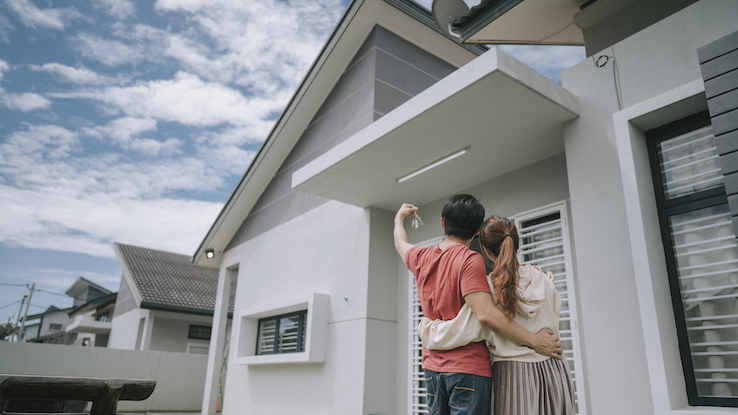
When you start making your first mortgage payments, you may be in for a bit of a surprise. In addition to the amounts of money that are allocated towards the principal and interest of your loan, you might see an additional charge for something called private mortgage insurance, or PMI.
Private mortgage insurance is a type of policy that only applies to specific conventional loans. It’s an annual fee you pay monthly or as a lump sum, but you won’t need to make these payments for the lifetime of your mortgage. If you do find yourself owing PMI, it’s important to understand what it is, how it works and how to satisfy this lending requirement.
What Is Private Mortgage Insurance?

Private mortgage insurance is an insurance policy that protects your lender from losing money if you default on your loan, meaning you stop making payments in a way that meets your original loan requirements. Lenders typically require borrowers who are deemed high-risk to pay for private mortgage insurance. This arrangement can last until a lender agrees that the borrower has built up enough equity in the loan. At that time, the borrower is no longer a higher risk for the lender.
A lender usually requires a borrower to pay for private mortgage insurance when the down payment for their conventional loan is less than 20% of the purchase price. Without private mortgage insurance, lenders aren’t willing to take on the risk of lending money to people who are unable to make a considerable down payment.
In addition to paying a higher down payment when buying a home, there are several strategies you can use to avoid paying private mortgage insurance. In most cases, private mortgage insurance doesn’t apply to a non-conventional loan, even in the case of 100% financing, which happens when the lender gives you a loan for 100% of the home’s value. This is a situation in which you have no down payment. The U.S. government typically backs these non-conventional loans, so the lender doesn’t need additional protection against defaults on mortgage payments.
How Much Is Private Mortgage Insurance?

Private mortgage insurance is costly and can add up depending on the home’s cost. Most private mortgage insurance will cost between .5% and 1%. While that may not sound substantial, it consumes a fair amount towards your mortgage. For instance, a $200,000 home with a $0 down payment would be left paying between $1,000 and $2,000 per year. This could add an additional $150 to your payments every month.
Paying $150 per month for just five years will add up to $9,000 paid towards private mortgage insurance. This money does not go towards the loan at all, so you are essentially throwing that money down the drain every single month. Also, consider that you could be paying that for well over five years or possibly more than ten years, depending on your down payment amount and loan term.
Luckily, getting rid of private mortgage insurance is possible even if you have already bought a home. If you pay enough money towards the principal of your mortgage loan to own 20% of the home’s value, your mortgage company will remove this insurance from your monthly expense. That means the more you pay to the principal, the sooner you can start saving that money.
Can You Avoid Paying Private Mortgage Insurance?

You can avoid paying private mortgage insurance by starting off your mortgage with an 80% or less loan-to-value ratio. This happens when you make a 20% down payment or borrow at least 20% less than the total purchase price without making a down payment.
If it’s allowed under the terms of your mortgage, you can get a second mortgage, called a piggyback mortgage, to cover the down payment cost if you won’t be able to pay at least 20%. You’re still responsible for making both mortgage payments — and one will cost much less than the other — but you avoid paying for private mortgage insurance.
Remember, a mortgage is a contract. Although there will be some standard provisions you might not have the option to change, nearly everything else is negotiable. Some lenders are willing to pay private mortgage insurance on behalf of a borrower. In exchange, you pay a higher interest rate for the entire term of the mortgage, but your lender will stop paying private mortgage insurance on your behalf when your loan-to-value ratio rises above 80%.





